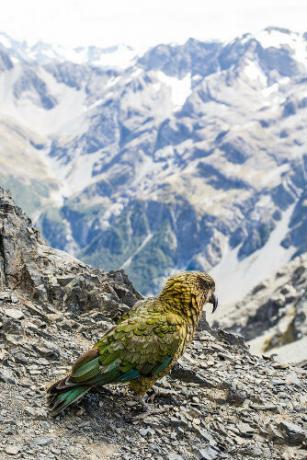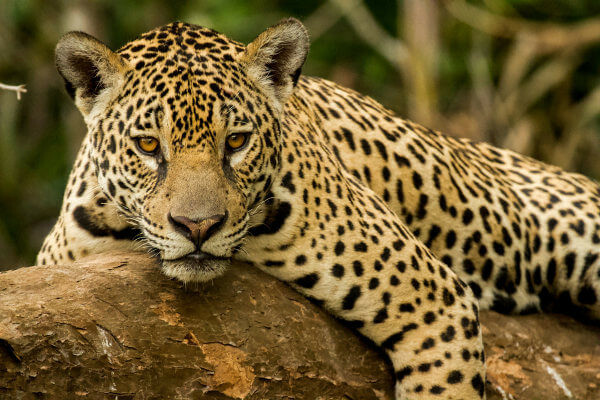Animals Endangered with extinction are those who are at risk of disappearing permanently from our planet, that is, to become extinct. Despite being relatively common in nature, currently, the extinction process has been intensified by man.
Read too:Extinct animals
→ Endangered animals in the world
Several species are threatened with extinction in the world as a result of environmental destruction, climate change, predatory hunting and fishing, pollution, among other factors. See below some species at risk of becoming extinct and their classification according to the IUCN Red List of Endangered Species:
Koala (Phascolarctos Cinereus): Koalas are classified as vulnerable. Currently, the population of these animals is declining.

Koalas are classified as vulnerable.
Blue Whale (Balaenoptera musculus): The blue whale is classified as a species. in danger. Currently, its population is increasing.
Polar Bear (Ursus Maritimus): The polar bear is classified as vulnerable. Its current population trend is unknown.
Kakapo (Strigops habroptilus ): Kakapos are birds that are classified as critically endangered. Currently, according to IUCN data, the population of these animals is increasing.

The kakapos are critically endangered.
African penguin (Spheniscus demersus): The African penguin is classified as in danger. Currently, its population is declining.
→ Endangered animals in Brazil
In Brazil, several species are also threatened with extinction or even extinct in the natural environment. Below are some endangered species and their current status according to the IUCN Red List of Endangered Species:
Giant Anteater (Myrmecophaga tridactyla): The giant anteater is an animal that is classified as vulnerable. Currently, the population of giant anteaters is declining.

The giant anteater is an animal native to America that is classified as vulnerable.
Spix's Macaw (Cyanopsitta spixii): THE Spix's Macaw is classified as possibly extinct in nature. Currently, there are specimens of these birds bred in captivity.
Jaguar (panthera onca): The jaguar is classified as almost threatened with extinction. Currently, there is a decrease in the populations of these animals.

The jaguar is almost threatened with extinction. One of the factors that contributed to this is the destruction of its habitat.
Armadillo Ball (Tolypeutes tricinctus): The armadillo is currently classified as vulnerable. Its population also shows a decreasing trend.
Golden Lion tamarin (Leontopithecus rosalia): The golden lion tamarin is a species classified as in danger. Its current population trend is considered stable.

The golden lion tamarin is classified as endangered, that is, it presents an increased risk of becoming extinct in the environment.
Otter (Pteronura brasiliensis): Currently, this species is in danger. It is observed that the population of these animals is decreasing.
Read too: Cerrado, a risk of extinction in Goiás
→ Causes of extinction of animals
Extinction is a natural process that happened to several species throughout our planet's history. The species we see today, for example, are completely different from those found 100 million years ago.
The causes of extinctions are varied, however, currently, we see that man has had a decisive role in this process. Among the main factors that can lead a species to extinction, we can mention:

Pollution can cause serious harm to animals, contributing to the extinction process.
Habitat destruction: A species is well adapted to its habitat when it finds in it the resources necessary for its survival. Having its habitat destroyed, a species may not be able to find the necessary resources in another area, running the risk of dying and, later, becoming extinct.
Pollution: As well as habitat destruction, pollution negatively affects the survival of living beings, creating conditions not tolerated by the species.
Hunting and fishing: Hunting and fishing are often so intense that they occur at a greater speed that a species can reproduce and, consequently, recover its population. Thus, many species go into extinction as a result of these activities.
Climate changes: Climate change can also lead to the decrease of a population and, consequently, its extinction. We clearly see how climate change affects species when we look at some amphibians, which are highly affected by increases in temperature and the frequency of rainfall. An article published in the magazine Ecology and Evolution showed that climate change could lead to the extinction of 42 species of anuran amphibians in the Atlantic Forest and Cerrado between 2050 and 2070.
Environmental disasters: Environmental disasters can also cause the extinction of many species. Volcanoes, earthquakes, tidal waves, glaciations and meteorite impacts, for example, can cause the death of several species. At the end of the Cretaceous period, the fall of a meteorite was probably responsible for the extinction of the dinosaurs.
Read too:Global Warming and Species Extinction
→ mass extinction

Dinosaurs ended their dominance on Earth after a massive mass extinction.
Many animals have gone extinct in processes known as mass extinctions, which are moments when the extinction rate rises abruptly in a short period of time. One of the best-known mass extinctions occurred at the end of the Cretaceous period, approximately 65.5 million years ago, and was responsible for the end of the domain of the dinosaurs.
The Cretaceous mass extinction wiped out nearly half of marine species, in addition to several terrestrial species, such as most dinosaurs. Probably, this extinction occurred due to a large cloud of dust that spread through the planet's atmosphere after the fall of a meteorite. This cloud caused a blockage of sunlight, causing several plants to die as a result of reduced photosynthetic rates. As a result, there have been changes in the planet's food chain and climate.
Read more about: Dinosaur extinction
Although the best known mass extinction is that of the Cretaceous, that of the Permian it was much more drastic. In this extinction, about 96% of marine species have gone extinct, in addition to the terrestrial species that were also affected. One of the explanations for this extinction is the intense volcanism at the time.
Because man negatively affects the environment, causing the extinction of several species, many authors believe we are heading towards mass extinction.It is estimated that more than a thousand species have gone extinct in the last 400 years, a very high value in relation to the history of life on the planet. Thus, analyzing our attitudes and creating policies aimed at preserving the environment are fundamental.
By Ma. Vanessa Sardinha dos Santos
Source: Brazil School - https://brasilescola.uol.com.br/animais/animais-extincao.htm
